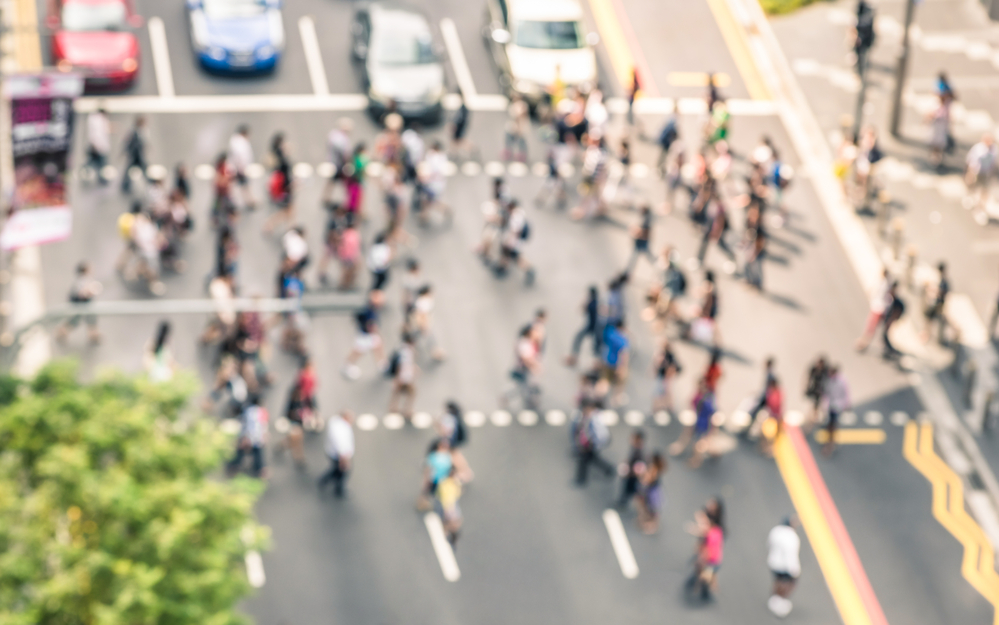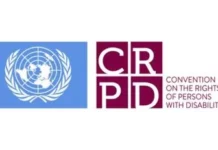In a new article published in The Journal of Public Space, Elizabeth Nyabiage Ombati highlights inclusion and accessibility issues faced by people with psychosocial disabilities in public spaces.
The author explains that people with less visible psychosocial disabilities are commonly left out of conversations around access and inclusion. Drawing on the framework laid out in the Convention on the Rights of Persons with Disabilities (CRPD), the 2030 Agenda for Sustainable Development, the New Urban Agenda, and the Sendai Framework for Sustainable Development, the current work explores stigma, violence, and urban design as they affect people with psychosocial disabilities.
The author concludes that governments must do more to understand the accessibility requirements for people with psychosocial disabilities. Ombati writes:
“Everyone has rights to the city: To experience its cultures and innovations, its histories and rich diversities. The question, however, that lingers is, is everyone actually accessing the city? And if some groups within society are not accessing such public spaces, what does this mean for the enjoyment of their human rights?”
 The current work draws on the frameworks laid out in several conferences concerning people with psychosocial disabilities. The United Nations (UN) Sustainable Development Goals acknowledged and promptly neglected improved mental health as a goal of central importance to sustainable development. The New Urban Agenda states that city planning and development must consider adapting the urban design to allow equal access to people with psychosocial disabilities. The Sendai Framework for Disaster Risk Relief concludes that disaster risk reduction policies often ignore the rights of people with disabilities.
The current work draws on the frameworks laid out in several conferences concerning people with psychosocial disabilities. The United Nations (UN) Sustainable Development Goals acknowledged and promptly neglected improved mental health as a goal of central importance to sustainable development. The New Urban Agenda states that city planning and development must consider adapting the urban design to allow equal access to people with psychosocial disabilities. The Sendai Framework for Disaster Risk Relief concludes that disaster risk reduction policies often ignore the rights of people with disabilities.
The UN’s CRPD moves away from focusing on individual impairments toward understanding the barriers that prevent full societal participation in people with disabilities and emphasizing the social rights of people with psychosocial disabilities. The CRPD also declared that involuntarily institutionalizing people with psychosocial disabilities is a human rights violation.
Abiding by this understanding would require an extreme shift in many countries like the United States away from involuntary confinement towards acknowledging the basic right of people with psychosocial disabilities to exist in public spaces. Some authors have even used the CRPD to call for reparations for people injured by involuntary treatment. The CRPD also argues that people with psychosocial disabilities should retain their full legal capacity to make decisions around treatment. This notion still eludes countries like the United States, in which people with psychosocial disabilities often have their decisions made by professionals.
Many authors have noted that governments worldwide have failed to support the provisions of the CRPD and need to do more to allow for the inclusion of people with psychosocial disabilities.
Rather than taking a perspective centered on individual impairments, the author writes from a viewpoint that understands disability as arising from the interaction of impairment and environmental barriers. From this perspective, equal access for people with psychosocial disabilities is a human rights imperative. The current work acknowledges that people with psychosocial disabilities are often viewed as a public nuisance. The various labels applied to such people often mark them as less than human.
The author briefly reflects on her own experience of inaccessible public spaces due to a psychosocial disability. She describes extreme anxiety in public spaces, noting that traffic jams were particularly hard for her to pass on foot as she felt people in the cars watching and judging her movements. This anxiety made panic attacks common and resulted in the author avoiding many places such as shopping malls. The author notes that the public’s reaction to people in moments of distress is often to ridicule, record, and report that person to the police rather than to help them.
People with psychosocial disabilities often face stigma, violence, and unfair incarceration in public spaces. The author points to a study in Kenya that revealed people with intellectual and psychosocial disabilities were much more likely to be arrested for petty offenses. People with psychosocial disabilities are commonly extrajudicially detained for long periods in Kenya’s national mental health hospital. They also face increased instances of violence and sexual assault. The media typically depict people with psychosocial disabilities as beggars and dangerous nuisances that should be cleaned up from the streets. The author notes that the media dedicates nearly no time to ask about the environmental factors that prevent people with these disabilities from accessing public resources and finding employment.
According to the CRPD, access to public spaces is a human right. Unfortunately, although many countries have ratified the CRPD, they have not made any real effort to ensure equal access to shared resources for people with psychosocial disabilities. There are two parts to achieving this equal access. The “hard” part of this problem involves technical knowledge and physical designs that allow for increased access to public spaces. The “soft” part of the problem is softening people’s attitudes and behaviors toward those experiencing psychological suffering.
The author points to several urban design decisions to increase accessibility for people with disabilities. Accessible green public spaces promote both physical and mental health. Wide pedestrian paths with clear signage and circulation routes can allow for increased access, as can uncluttered spaces with “break-out areas.” By including people with psychosocial disabilities in design decisions and employing them at the infrastructure design level, we could likely address many accessibility issues that would otherwise go ignored.
The author concludes:
“Governments at all levels, in particular local and regional governments, together with organizations of persons with disabilities, must build the staff capacity of infrastructure service providers and urban practitioners in understanding the different accessibility requirements for all types of impairment groups: respecting intersecting identities and diversity of persons with disabilities and also exercising patience, kindness, and empathy.”
****
Ombati, E. (2022). Persons with Psychosocial Disabilities in Public Spaces: Welcomed or Shunned?. The Journal Of Public Space (Link)















Kind of assumes the city is a God to the person and not the other way around.
But that may be my most ridiculous comment yet, so don’t imbibe it until I have mulled it over.
Report comment
This is an interesting subject that I initially wanted dismiss but second glance realized it is a foundational obstacle to receiving medical care for anyone harmed by the system.
I am a difficult anxious patient with PTSD from mood disorder treatments so when a medical professional documents my anxiety with a blood pressure cuff without realizing the hell I’m in it feels like I’m being discriminated against. The real problem is that if they ask about my blood pressure I’m more than happy share my accurate data from when I practice biofeedback.
There are obvious benefits to looking at raising awareness to discriminatory practices like daylight savings time, past failed treatments, and a mental health system more similar to the criminal justice system than medicine. That said it is important not repeat the mistakes of idiot, moron, and imbecile.
Report comment
The question might be how do you define “psychosocial disabilities?” Is it a valid definition that helps or hurts people? What “disabilities” are included? I think the concept of “psychosocial disabilities” might be so vague that inclusiveness might be next to impossible and thus those who disabilities might need to be considered in all areas, especially public spaces are left out. These people suffer, as does the entire population of the city. Thank you.
Report comment